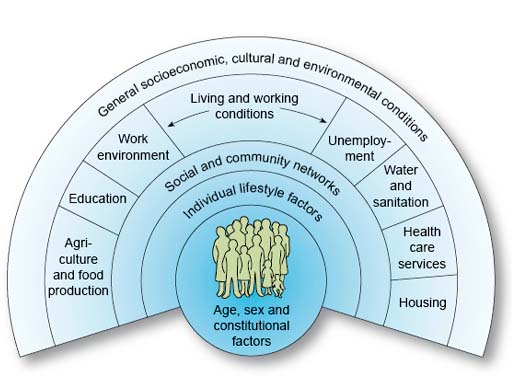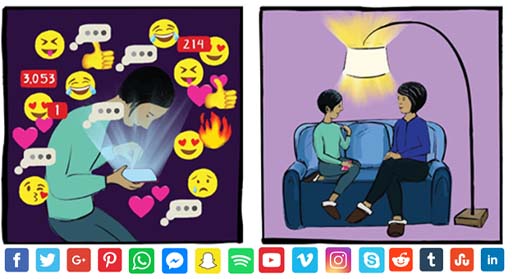3 The role of social media
Social media is a big part of the lives of many of us now, but social media has become a part of a young person’s social world to an extent that was unthought of when Dahgren and Whitehead created their model (introduced in Section 1.2) containing the social determinants of health.

The reference to ‘Communites’ mentioned in the diagram would now extend to media ‘friends’ and ‘followers’ as well as online discussion forums.
Research continues to explore the impact of social media on mental health. While social media is often discussed in negative terms, the relationship young people have with social media is quite complex. In the next activity you will listen to an interview where two young people, Martha and Josie reflect on their own social media use and discuss its impacts.

